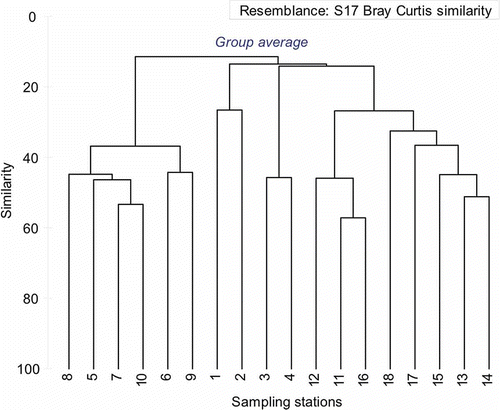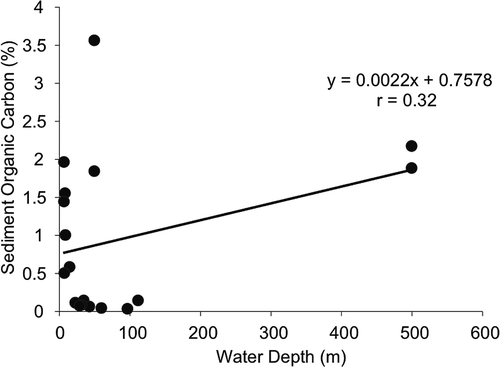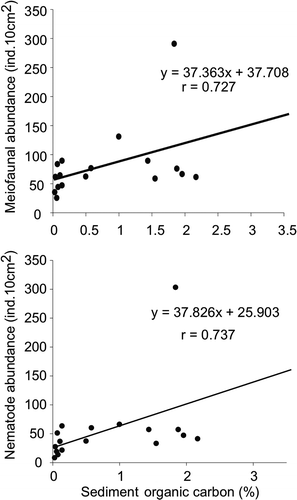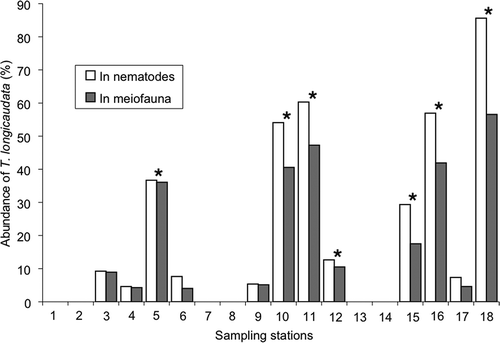Figures & data
Table I. Stations and parameters
Figure 5. Multi-dimensional scaling (MDS) ordination for untransformed meiofaunal (a) and nematode (b) abundance on a two-dimensional scale at each station location.
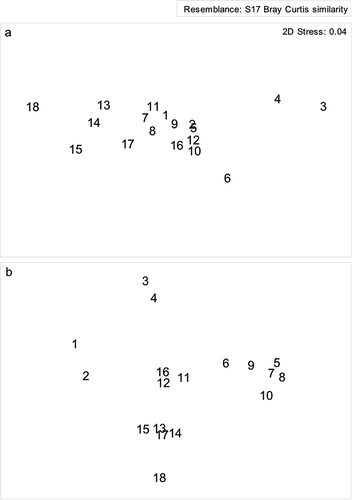
Figure 6. Bray–Curtis similarity cluster analysis based on nematode species abundance at each station location.
